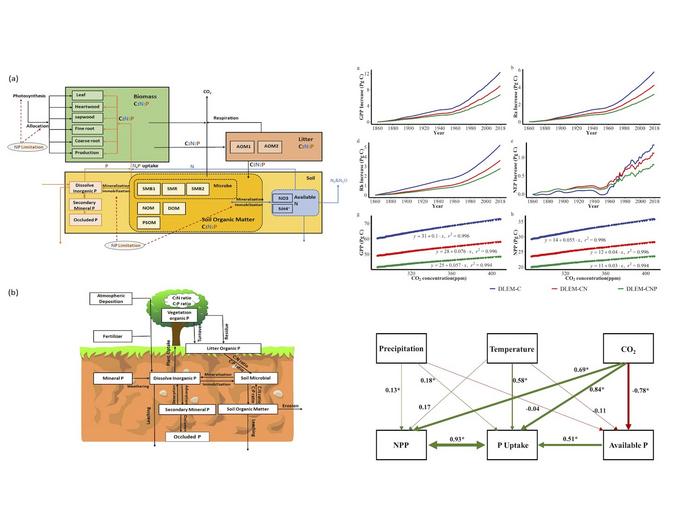Tropical forests store approximately 72% of the global forest biomass carbon and contribute about one-third of the global net primary productivity (NPP). The CO2 fertilization effect, which enhances CO2 concentrations in leaves and boosts plants’ carbon fixation capacity, has been a key mechanism for maintaining and increasing tropical forest productivity. However, the future of this CO2 fertilization effect is uncertain, partly due to nutrient limitations.

Credit: Zhuonan Wang,et al.
Tropical forests store approximately 72% of the global forest biomass carbon and contribute about one-third of the global net primary productivity (NPP). The CO2 fertilization effect, which enhances CO2 concentrations in leaves and boosts plants’ carbon fixation capacity, has been a key mechanism for maintaining and increasing tropical forest productivity. However, the future of this CO2 fertilization effect is uncertain, partly due to nutrient limitations.
In a study published in the KeAi journal Forest Ecosystems, researchers from the United States, Japan, and China present a new carbon-nitrogen-phosphorus coupled biogeochemical model called the Dynamic Land Ecosystem Model (DLEM-CNP). This model examines how phosphorus (P) limitation affects carbon fluxes in tropical forests.
“Tropical forests are vital carbon reservoirs, and their capacity could increase with more CO2, but nutrients are crucial to support this growth,” says Zhuonan Wang, the study’s lead author and postdoctoral researcher at the Natural Resource Ecology Laboratory, Colorado State University. “Our model simulates biogeochemical processes in tropical forests and represents the interactive co-limitation of nitrogen and phosphorus on vegetation carbon fixation. It allows us to explore how different factors impact the CO2 fertilization effect in these forests.”
The study’s multidisciplinary team found that phosphorus limitation reduced the productivity responses of tropical forests to rising atmospheric CO2 concentrations. Combined nitrogen and phosphorus limitations diminished the CO2 fertilization effect on gross primary production, net primary productivity, and net ecosystem production by 45%, 46%, and 41%, respectively. While CO2 fertilization had a significant positive impact on GPP and NPP, deforestation was the main factor contributing to reductions in these metrics. The factorial experiment revealed that deforestation offset the CO2 fertilization effect on NPP by 135% from the 1860s to the 2010s.
According to Zhuonan Wang, this represents a major advancement in terrestrial biosphere modeling. “Our novel approach highlights how increasing phosphorus limitation and deforestation reduce the carbon sink potential of tropical forests, emphasizing the critical role of phosphorus in the carbon cycle. We hope our results encourage further exploration of carbon-nitrogen-phosphorus models in understanding the global carbon cycle.”
###
Contact the author: Zhuonan Wang; Natural Resource Ecology Laboratory Colorado State University; zhuonan.wang@colostate.edu
The publisher KeAi was established by Elsevier and China Science Publishing & Media Ltd to unfold quality research globally. In 2013, our focus shifted to open access publishing. We now proudly publish more than 100 world-class, open access, English language journals, spanning all scientific disciplines. Many of these are titles we publish in partnership with prestigious societies and academic institutions, such as the National Natural Science Foundation of China (NSFC).
Journal
Forest Ecosystems
Method of Research
Computational simulation/modeling
Subject of Research
Not applicable
Article Title
Phosphorus limitation on CO₂ fertilization effect in tropical forests informed by a coupled biogeochemical model
COI Statement
The authors declare that they have no known competing financial interests or personal relationships that could have appeared to influence the work reported in this paper.



